Related Research Articles
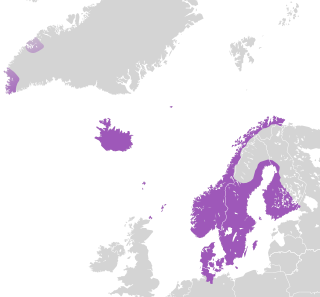
The Kalmar Union was a personal union in Scandinavia, agreed at Kalmar in Sweden as designed by widowed Queen Margaret of Norway and Sweden. From 1397 to 1523, it joined under a single monarch the three kingdoms of Denmark, Sweden, and Norway, together with Norway's overseas colonies.
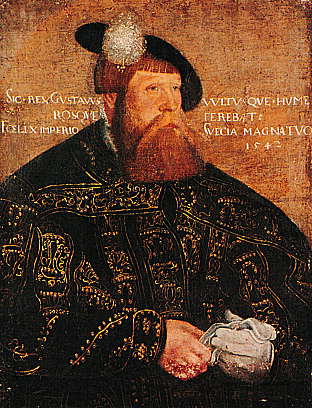
Gustav I, commonly known as Gustav Vasa, was King of Sweden from 1523 until his death in 1560, previously self-recognised Protector of the Realm (Riksföreståndare) from 1521, during the ongoing Swedish War of Liberation against King Christian II of Denmark, Norway and Sweden. Gustav rose to lead the Swedish War of Liberation following the Stockholm Bloodbath, where his father was executed. Gustav's election as king on 6 June 1523 and his triumphant entry into Stockholm eleven days later marked Sweden's final secession from the Kalmar Union.

Mikael Agricola was a Finnish Lutheran clergyman who became the de facto founder of literary Finnish and a prominent proponent of the Protestant Reformation in Sweden, including Finland, which was a Swedish territory at the time. He is often called the "father of literary Finnish".

Helsinki University of Technology was a technical university in Finland. It was located in Otaniemi, Espoo in the Helsinki metropolitan area. The university was founded in 1849 by Grand Duke of Finland, Emperor Nicholas I and received university status in 1908. It moved from Helsinki to Otaniemi campus area in 1966. The merger of HUT with two other schools created the Aalto University in 2010, and HUT briefly held the name Aalto University School of Science and Technology before being split into four schools in 2011.

Vasa or Wasa is a Swedish warship built between 1626 and 1628. The ship sank after sailing roughly 1,300 m (1,400 yd) into her maiden voyage on 10 August 1628. She fell into obscurity after most of her valuable bronze cannons were salvaged in the 17th century, until she was located again in the late 1950s in a busy shipping area in Stockholm harbor. The ship was salvaged with a largely intact hull in 1961. She was housed in a temporary museum called Wasavarvet until 1988 and then moved permanently to the Vasa Museum in the Royal National City Park in Stockholm. The ship is one of Sweden's most popular tourist attractions and has been seen by over 35 million visitors since 1961. Since her recovery, Vasa has become a widely recognized symbol of the Swedish Empire.

John II Casimir Vasa was King of Poland and Grand Duke of Lithuania from 1648 to his abdication in 1668 as well as a claimant to the throne of Sweden from 1648 to 1660. He was the first son of Sigismund III Vasa with his second wife Constance of Austria. John Casimir succeeded his older half-brother, Władysław IV Vasa.

The University of Helsinki is a public university in Helsinki, Finland. The university was founded in Turku in 1640 as the Royal Academy of Åbo under the Swedish Empire, and moved to Helsinki in 1828 under the sponsorship of Tsar Alexander I. The University of Helsinki is the oldest and largest university in Finland with the widest range of disciplines available. In 2020, around 31,600 students were enrolled in the degree programs of the university spread across 11 faculties and 11 research institutes.

Åbo Akademi University is the only exclusively Swedish language multi-faculty university in Finland. It is located mainly in Turku but has also activities in Vaasa. Åbo Akademi should not be confused with the Royal Academy of Åbo, which was founded in 1640, but moved to Helsinki after the Turku fire of 1827 and is today known as the University of Helsinki.
The student nations or nationer at the two ancient universities in Uppsala and Lund, of which there are now thirteen at each university, are the oldest student societies in Sweden. The Uppsala nations have a history stretching back to around 1630–1640. The nations in Lund were formed at the time of the foundation of the university (1666) or shortly thereafter.
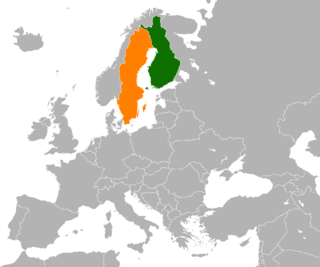
Finland and Sweden share a long history, similar legal systems, and an economic and social model. Finland was part of Sweden for almost 700 years from around 1150 until the Finnish War of 1809 after which Finland became an autonomous part of the Russian Empire as the Grand Duchy of Finland. Since Finland gained its full independence from Russia in 1917, Finland and Sweden have been close partners, enjoying a special relationship. The number of Finnish-Swedish connections and the quality of cooperation in most areas of the government is unique when compared to other international relations involving both countries. The Swedish language has an official status in Finland, whilst Finns form the largest ethnic minority in Sweden, estimated to be about 675,000.
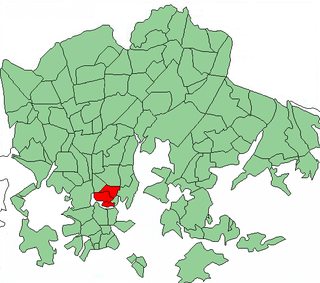
Kallio is a district and a neighbourhood in Helsinki, the capital of Finland, located on the eastern side of the Helsinki peninsula about one kilometre north from the city centre. It is one of the most densely populated areas in Finland. Kallio is separated from the city centre by the Siltasaarensalmi strait, over which is a bridge called Pitkäsilta. Traditionally, the bridge symbolizes the divide between the affluent centre and the more working class areas around Kallio.

Vanhakaupunki is a neighbourhood of the city of Helsinki, Finland, to the north of Toukola. It is also the name of a district of the city, which contains the neighbourhood and its surroundings. The name comes from the fact that Helsinki was originally founded in the Vanhakaupunki area. The Swedish name Gamla Helsingfors appears in the new Helsinki foundation document from 1639, as the city was moved to its later location, and the forms Gamla staden or Gammelstaden came into use after this. The Finnish translation of the name only started appearing in the late 19th century. The current names were established as official in 1909. The neighbourhood was named Vanhakaupunki in 1959.
Yle Vega is a Finnish radio channel broadcasting in the Swedish language. It is operated by Finland's national public service broadcaster Yle, which has its headquarters in Helsinki.

Erkki Aleksanteri Räikkönen was a Finnish nationalist leader.

Kari Valtteri Tarkiainen is a Finnish historian and archivist, who served as the national archivist of Finland 1996–2003. He is a grandson of the scholar Viljo Tarkiainen and his wife, writer Maria Jotuni.

In Finland, student nations are student organisations within which a large proportion of extra-curricular student activity takes place. Though membership is not compulsory, the nations provide one of the main nodes of student social life, along with the faculty-based organisations (ainejärjestöt) at the universities.

North Ostrobothnian Nation is one of the 15 student nations at the University of Helsinki. PPO is Finnish-speaking and established in 1907. Originally formed by students from the northern former Oulu and Lapland Provinces, the nation now accepts anyone studying in the Helsinki region as a member.
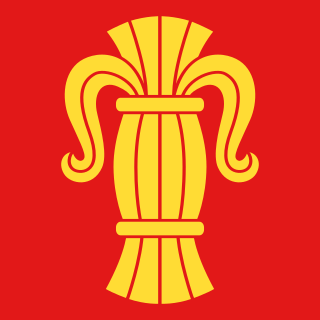
Vaasa, in the years 1855–1917 as Nikolainkaupunki, is a city in Finland and the regional capital of Ostrobothnia. It is located on the west coast of the country, on the Gulf of Bothnia. The population of Vaasa is approximately 69,000, while the sub-region has a population of approximately 110,000. It is the 14th most populous municipality in Finland, and the tenth most populous urban area in the country.

In Swedish and Finnish history, Finland under Swedish rule is the historical period when the bulk of the area that later came to constitute Finland was an integral part of Sweden. The starting point of Swedish rule is uncertain and controversial. Historical evidence of the establishment of Swedish rule in Finland exists from the middle of the 13th century onwards.
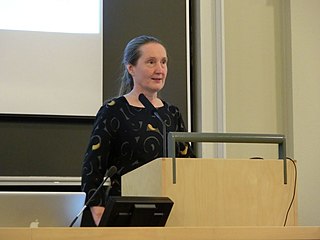
Ritva Serimaa was a Finnish physicist and professor, the first female professor of physics at the University of Helsinki. She gained her master's degree in 1982 and defended her doctoral thesis in 1990, becoming a docent of the University of Helsinki in 1992. Her doctoral thesis work and later research concerned X-ray physics and scattering. From 1991 to 1993 she worked at Stanford University making use of their synchrotron light source SSRL. One research focus was the structure of the preserved Swedish warship Vasa, whose structure was at risk due to damage from sulfur-containing compounds. From 2004 she was professor of physics at the University of Helsinki, the first woman to hold such a post.
References
- ↑ Vasa nation. "Vasa nation at Helsinki University" (in Swedish). Retrieved December 2, 2010.